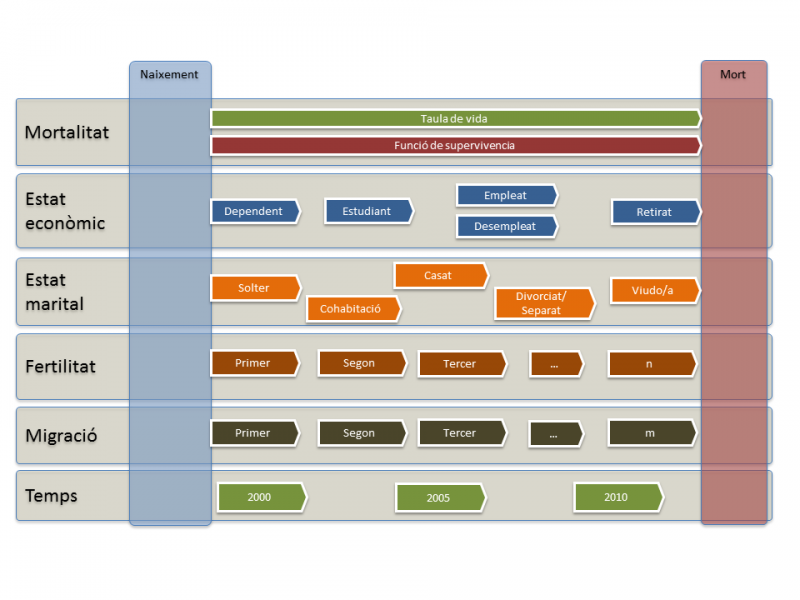Nowadays, to understand the reality that surrounds us and to take right decisions is not an easy task. Simulation is one of the most powerful tools we can use to analyze, design and guide our decisions in many areas of study. With simulation, we can construct a model of the reality for being able to test and to see the effect of the changes, and thus, to take more accurate decisions.
What trend did simulation studies have?
Until a few years ago, simulation studies were principally centered in transport and logistic areas, but lately it's drawing attention in other areas such as the energy efficiency and the social sciences ones. Nowadays, in social and humanistic fields the use of simulation has a noteworthy impact, since the big majority of decisions and social policies applied affect directly to the wellness of the people and, therefore, decisions cannot be taken without an exhaustive study.
How can simulation help the social studies?
The big challenge of social studies is the difficulty in analyzing the behavior of the people with classical techniques, because people and societies change their behavior constantly, sometimes even in an unpredictable way. Besides, in order to perform a social study, groups people are needed and some tests are expensive, both in money and time, or even impossible to carry out for ethical reasons. For that, simulation offers a very valuable opportunity for the experimentation of complex social systems and enables the implementation of any kind of measures or policies with more confidence.
Why use agent based models?
There are different types of social simulation (Gilbert and Troitzsch, 2005). One of the most popular approaches is the agent based simulation (ABS), where an agent or individual can be, more or less, “intelligent”.

The agent based modelling (ABM) is a paradigm where the models are formed by a group of individuals who interact with each other and with their environment to achieve their aims, and they can learn from each other in that process. The capacity to reproduce the human nature of the agent based models has been the reason why these models have been imposed on more traditional mathematical models (analytical) in the social researchers community.
Where does inLab apply social simulation?
In inLab we have worked in social simulation in three specific case studies:
- The study of demographics of the Gambian immigrants in Catalonia
- The prediction of demographics of South Korea
- The transmission of tuberculosis in Ciutat Vella

- In the first study, inLab investigated about evolution of Gambian population immigration in Spain in recent years. Gambia is a country of 1.5 million people of sub-Saharan Africa with very specific characteristics:
- it has a very high fertility rate
- more than 30% of its population has emigrated, being Spain the main destination
The Gambian community in Spain is mostly concentrated in Catalonia and, even though life conditions are different, they keep their high fertility rate. In this study case, inLab designed a simulation model for studying Gambian population dynamics in Catalonia to see how they affect to their migrations between 2001 and 2011, when spanish economy was stronger and immigrant fluxes were highly increased. With this study it was developed a model to study the Gambian population in our country in order to measure the effects they represent in our demographic reality.
- South Korea is a a country with 50 million people with a severe problem: it is the most aging developed country in the world. The South Korean government expects the consequences this could mean for the country's medium and long term and has started to investigate in simulate and predict the demography of the country. In collaboration with a research center from the asian country, inLab has done a study with the aim of analyzing demographic patterns of South Korea with a simulation tool that enables the study of population dynamics and potential internal migrations. Thanks to the use of parallel simulation methodologies, it was possible to analyze a 10% of the country simulation (5 million agents), reducing computational costs. The result is a model adjusted to United Nations current predictions and can be used for making political decisions in that country.
- Finally, inLab has participated in a study of the transmission of tuberculosis in the district of Ciutat Vella in Barcelona. Due to the characteristics of this neighborhood with high population density and high immigration, Ciutat Vella has a very high rate of tuberculosis, making that the current Barcelona’s rate is at the level of other developing countries such as Sudan. Tuberculosis is a disease that has first symptoms very similar to a cold, which causes that it is detected in nine weeks. To reduce this detection time is crucial for the disease does not spread and in Barcelona we have a very powerful tuberculosis monitoring unit of the health department. For this reason, we have worked in modelling Ciutat Vella population using an agent based model and we have simulated how different intervention politics affect to the transmission of tuberculosis disease in that district.